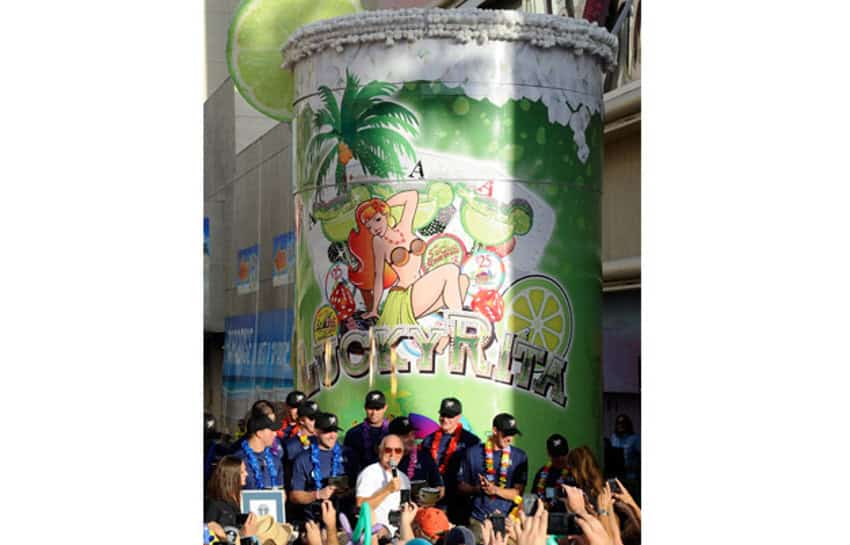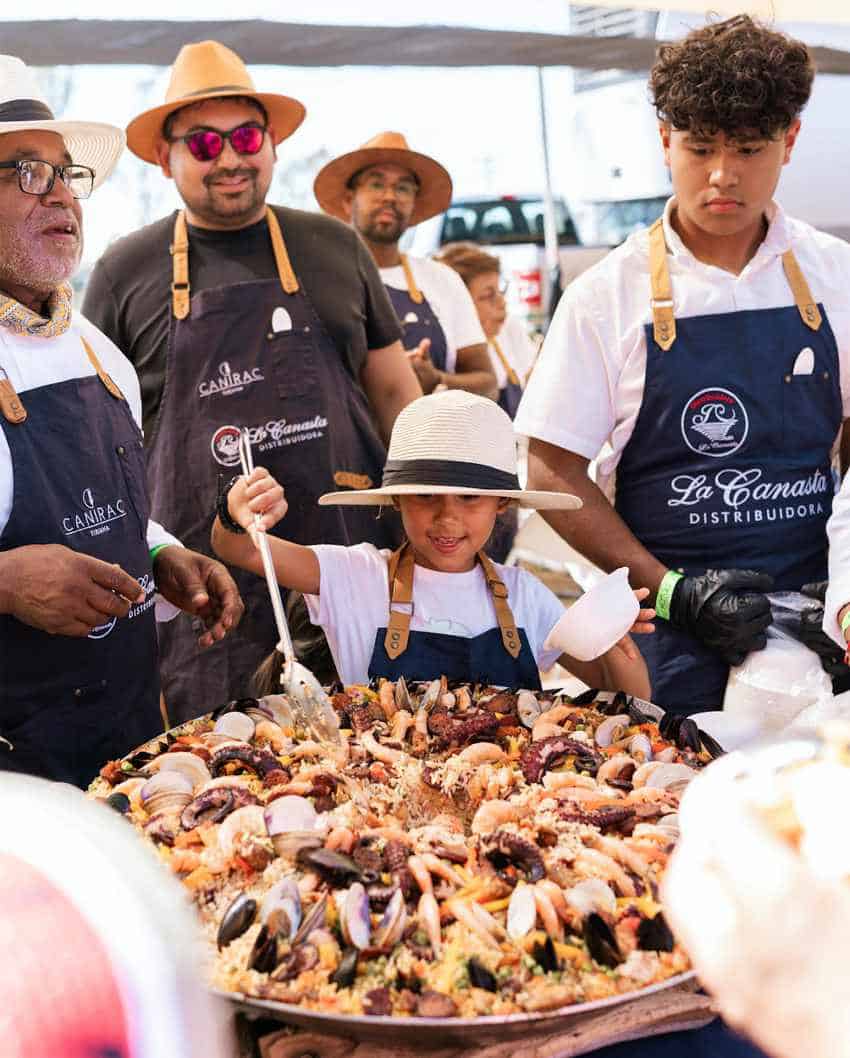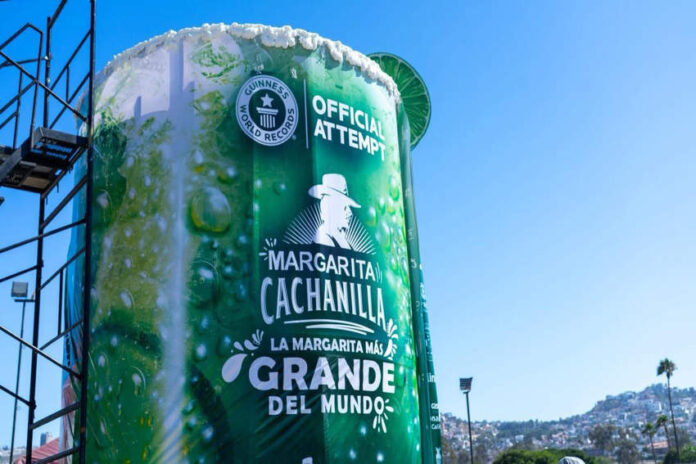Tijuana’s 136th anniversary celebrations this year are a perfect reflection of the city’s history and culture. No, I’m not referring to the symbolic cake cutting or concerts featuring big-name musical acts, although these certainly took place as part of the festivities scheduled around July 11, the official date on which Tijuana was founded in 1889.
Nope, I’m talking about Tijuana making the world’s largest margarita.
How Baja California made cocktail history
There are many origin stories for the margarita, one of the world’s most popular cocktails, and virtually all of them are set in Baja California.
The growing consensus among cocktail historians is that the iconic Mexican sipper grew out of Tijuana’s raucous bar scene during the 1920s and early ’30s, when Southern Californians looking to escape Prohibition in the United States would cross the border to slake their thirst for forbidden libations.
A favorite was the daisy, a cocktail made with many liquors, but first mixed with tequila in Tijuana; “daisy” in Spanish is “margarita,” and thus, a new cocktail legend was born.
Tijuana takes the invention of the margarita seriously, just as it does the homegrown Caesar salad, which celebrated its 100th anniversary last year. So it must have galled city officials that the record for the world’s largest margarita had, since 2011, resided on the other side of the border in Sin City.
Dubbed “Lucky Rita,” the 32,176-liter cocktail was constructed contemporaneously with the opening of the Margaritaville Casino at the Flamingo Las Vegas.
Tijuana, the true home of the margarita, was up to the challenge of retaking the record. The Tijuana version was called Margarita Cachanilla in honor of its tequila sponsor. Cachanilla, which produces its Agave tequilana distilled liquors in Amatitán, Jalisco, but is headquartered in — you guessed it — Tijuana.

In addition to topping Las Vegas in quality, Tijuana also bested it in volume, officially capturing the Guinness World Record when its enormous lime-garnished cocktail reached 34,419 liters. For context, that’s enough to pour out two-ounce shots for over 360,000 people.
How was this monster beverage made, you may ask? It took the efforts of over 300 student volunteers from local universities to assemble the concoction, which was stored in a steel tank 8 meters high and contained 8,890 liters of Cachanilla tequila, over 4,000 bottles of Triple Sec, oceans of fresh lime juice and Felipe’s Sea Salt.
If these proportions seem about right, that’s because they had to be. Susan Reyes was on hand as a representative of Guinness World Records to authenticate the feat and ensure several key benchmarks were met. One was that the proportions were the same as a normal-sized margarita. Based on the tank’s cooling and stirring systems, it was estimated that the monster margarita would remain fresh and drinkable for about three days.
Tijuana, we salute you.
Baja California’s wine harvest festival arrives soon
Dates for the 35th Fiestas de la Vendimia (Wine Harvest Festival) are set: July 30 through Aug. 24. Yes, that’s more than three weeks long, and the list of events, for which tickets can be purchased individually, is very lengthy. It’s also very popular. Last year, over 120,000 people attended affiliated events and activities in Ensenada and Valle de Guadalupe.

Wine has been made on the Baja California peninsula since Jesuit missionaries planted vineyards in the 17th and 18th centuries. However, the first commercial winery in Baja California wasn’t established until 1888. That was Bodegas de Santo Tomás, which remains one of the state’s best producers.
Official and unofficial events have commemorated the annual harvest of wine grapes for more than a century and predate the formation of Provino Baja California, which promotes the region’s wines and organizes Fiestas de la Vendimia. The first of these was the Primera Gran Feria de la Cosecha de la Uva, held in Valle de Guadalupe, the heart of Baja’s wine country, in 1963. Other harvest festival precursors to the Fiestas de Vendimia continued throughout the 1970s and 80s.
As the current festival has grown, so too has the regional wine industry. Only a handful of wineries participated in the first Fiestas de la Vendimia in 1990, and as recently as 2006, there were fewer than 25 wineries in all of Mexico. Today, there is over triple that number in Baja California alone, with the state accounting for over 70% of the nation’s wine production. As an example of this growth, over 80 wineries are expected to participate in this year’s wine harvest festivities, showcasing 160 labels.
The most famous event at Fiestas de la Vendimia is undoubtedly the Concurso de Paellas, a contest in which teams compete to make the best paella, to the gustatory benefit of those who’ve bought tickets. This is the concluding event of the festival and has been since its very first edition in 1990. Over 2,500 people attended in 2023 and 2024, and during the prepandemic years such as 2019, as many as 7,000 attendees turned out.
The paellas that feed festivalgoers are prepared by the 90 or so teams competing for first prize, an honor accompanied by a trophy and prizes Some teams feature professional chefs while others are made up of family members working off of recipes handed down over generations. But all have to follow the same rules, using pans of the same size and the same quantities of rice. Determining the winner, meanwhile, are over three dozen judges, who evaluate entrants based on both quality and presentation.
This being a wine festival, wine pairing options are abundant for the paellas. Tickets for the upcoming Concurso de Paellas, held at winery Viña de Liceaga on Aug. 17, cost 1,450 pesos per person, with children 12 and under admitted free. Tickets for this and other events at this year’s Fiestas de la Vendimia are available through Provino. However, this doesn’t include the kickoff Salón del Vino 2025 on July 30, which offers food from 10 top area restaurants and wines from 72 wineries at the Hotel Coral y Marina in Ensenada, but is invitation only.
Chris Sands is the Cabo San Lucas local expert for the USA Today travel website 10 Best, writer of Fodor’s Los Cabos travel guidebook and a contributor to numerous websites and publications, including Tasting Table, Marriott Bonvoy Traveler, Forbes Travel Guide, Porthole Cruise, Cabo Living and Mexico News Daily. His specialty is travel-related content and lifestyle features focused on food, wine and golf.
